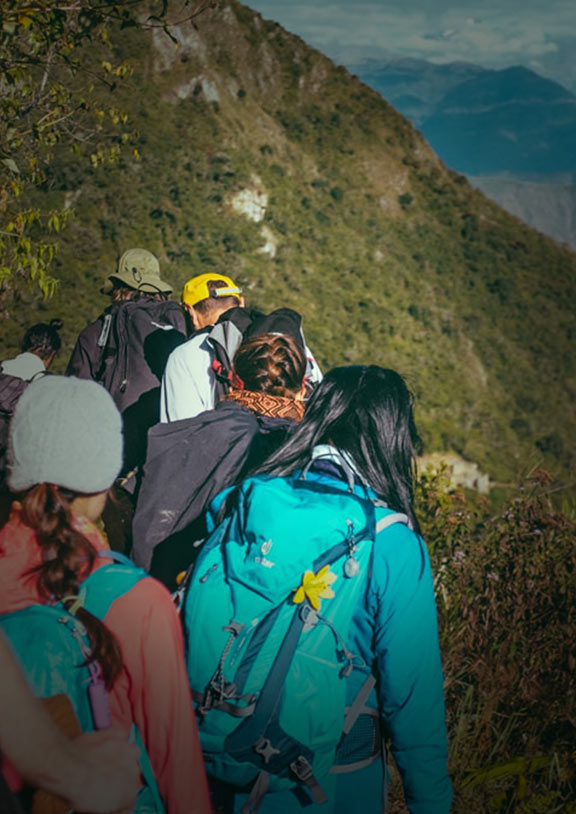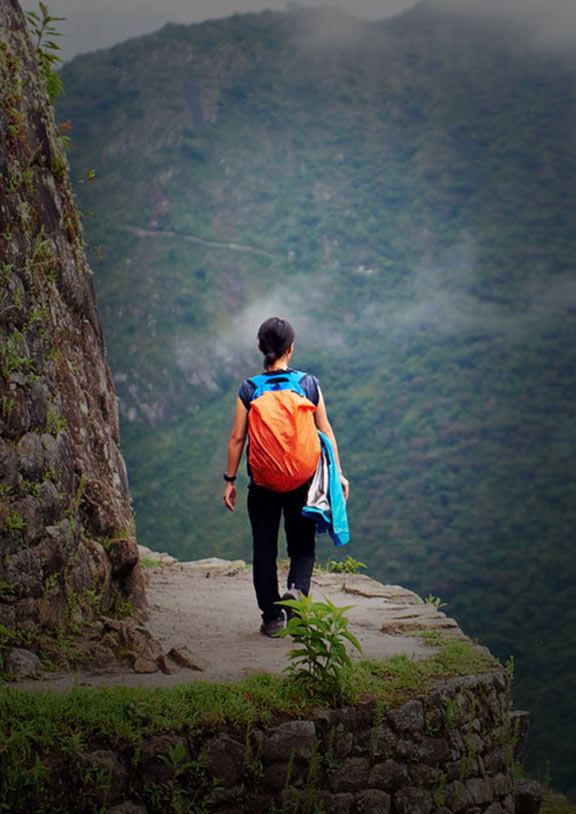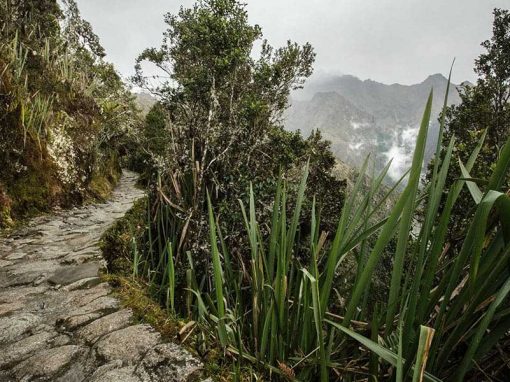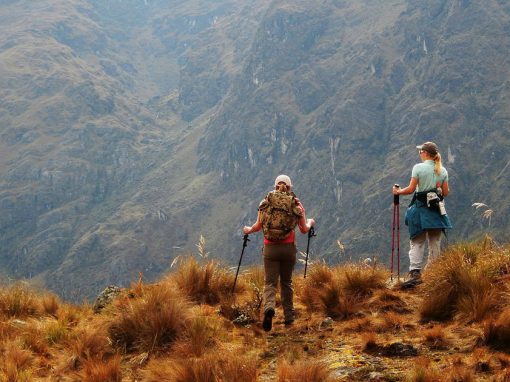Most people hike the Inca Trail to see the world famous Machu Picchu. But what you may not realize is that the journey to the citadel is strewn with fascinating Inca ruins and splendid archeological complexes. Read this brief introduction about some of the sites you’ll see on your trek to the top (based on our standard four day Inca Trail trek).
1. Patallacta (Llactapata)
Only a few hours of hiking on your first day will lead you to the first superb Inca site. Patallacta (also called Llactapata) sits on the far left bank of the Cusicancha River, a tributary of the river Urubamba. This archaeological complex was first noticed by the Western world in 1912 when famous Yale University archeologist Hiram Bingham – noted for rediscovering Machu Picchu the year before – stumbled upon it.
Llactapata means “high town” or “town on the hill” in Quechua, which is the Incan language still spoken in some parts of the Andes today. The complex sits at an altitude of 9,318 feet (2,840 meters) and contains massive terraces and hundreds of housing structures. It is believed this was a common stopping point for Incas traveling from Cusco to Machu Picchu. From your vantage point across the valley, you’ll be able to fully appreciate the site’s beauty and expanse.
2. Runkurakay
On the morning of the third day on your Inca Trail trek, you’ll huff and puff your way up the Runkurakay Pass. At the top, this pass is 13,000 feet (3,950 meters) above sea level. About halfway up you will come across the Runkurakay ruins.
These ruins are a small circular complex, a design not common in Inca architecture. Experts believe this site was a tambo, which means it likely served as an inn. It is probable that Runkurakay was primarily a resting, refueling, and relay station for messengers. Refueling stations like this were vital for maintaining communication across the Inca Empire. Chasqui messengers were specialized runners who dashed along Inca roads, carrying important messages—such as the encroachment of the Spaniards.
3. Sayacmarca
Later on, you will reach Sayacmarca, another impressive site. To enter these ruins, you’ll climb up 98 stone steps carved into the side of the mountain. Also called the “Inaccessible Town,” this site is barricaded on three sides by steep drop-offs. No one is sure how the Incas used this site, but it was originally built by the Colla civilization.
Sayacmarca sits on the edge of a cliff, giving visitors a panoramic view of the scenic Aobamba Valley. The site is divided into two main parts: the Sun Temple and the residential part, consisting of a labyrinth of narrow corridors. The Incas improved upon the Colla construction by building an elaborate water canal to supply the temple and houses with water.
4. Phuyupatamarca
The sites just keep coming! After Sayacmarca, you’ll journey through an inclined stone tunnel to reach the third and final mountain pass of your third day on the Inca Trail. Enjoy the spectacular view from the top before descending a steep set of stairs to reach Phuyupatamarca, which means “town in the clouds” in Quechua.
These ruins cling to a ravine overlooking the Urubamba Valley, and are surrounded by large and lush terraces. The site is often half covered in a mist that rises from the forests below, creating the impression that it is floating on top of the clouds. This mystical place is full of ceremonial baths, plaza, buildings, and bridges.
5. Machu Picchu
Let’s hope you haven’t tired of ruins, because the most impressive site of all awaits. On your fourth and final day on the Inca Trail you will finally reach the magnificent Machu Picchu citadel. Words are not sufficient to express the extreme beauty of this site, so you’ll just have to experience a Machu Picchu tour for yourself!
For more information about trekking in Peru and the sites you’ll see, contact one of our expert Travel Advisors.

Peru for Less is a group of travel experts who live, work, eat, and breathe all things South America. Their inspiration stems from a deep appreciation for the beauty and diversity that make this continent so special.











